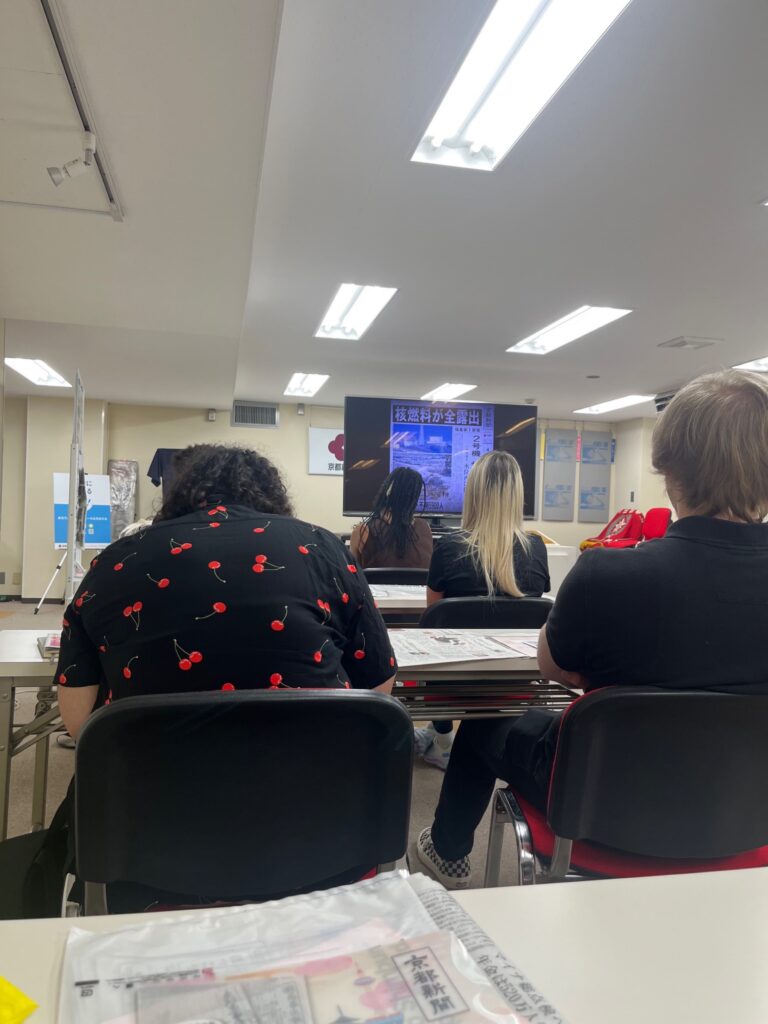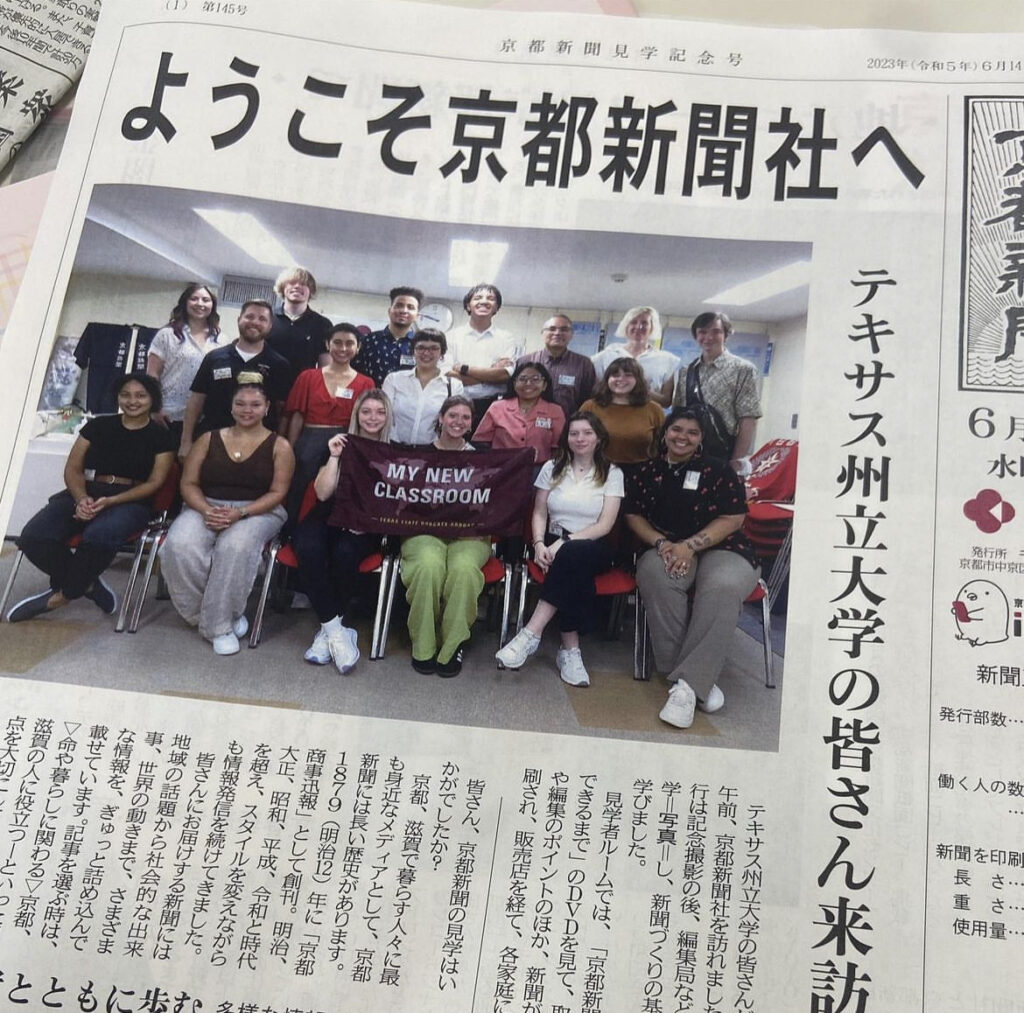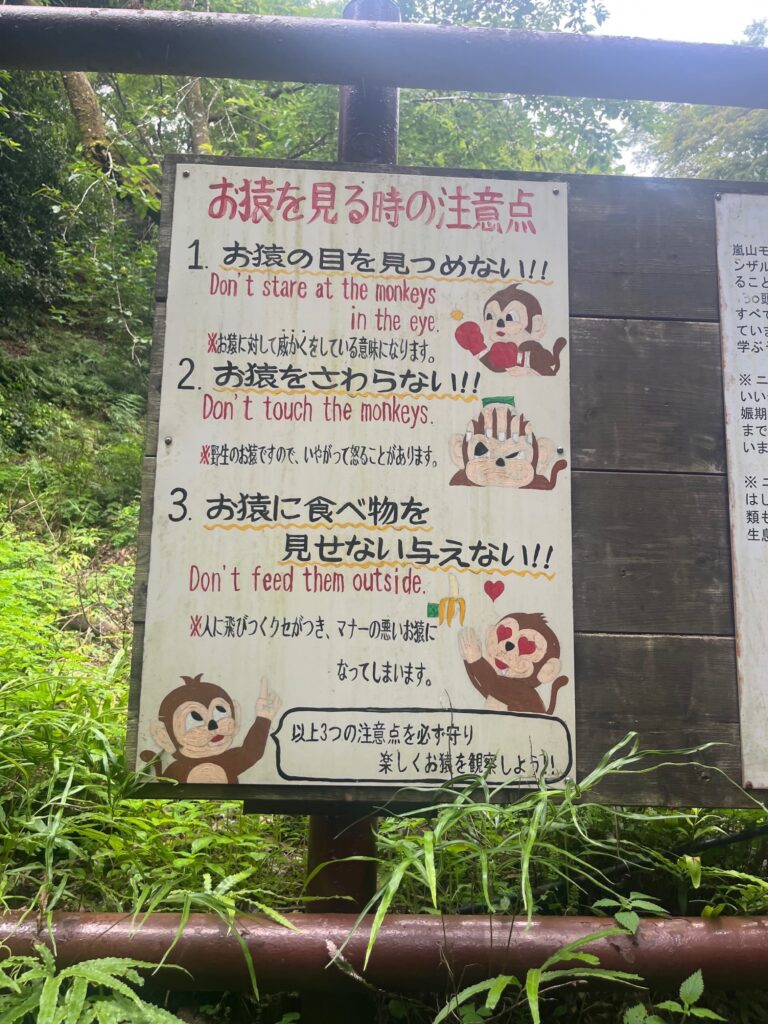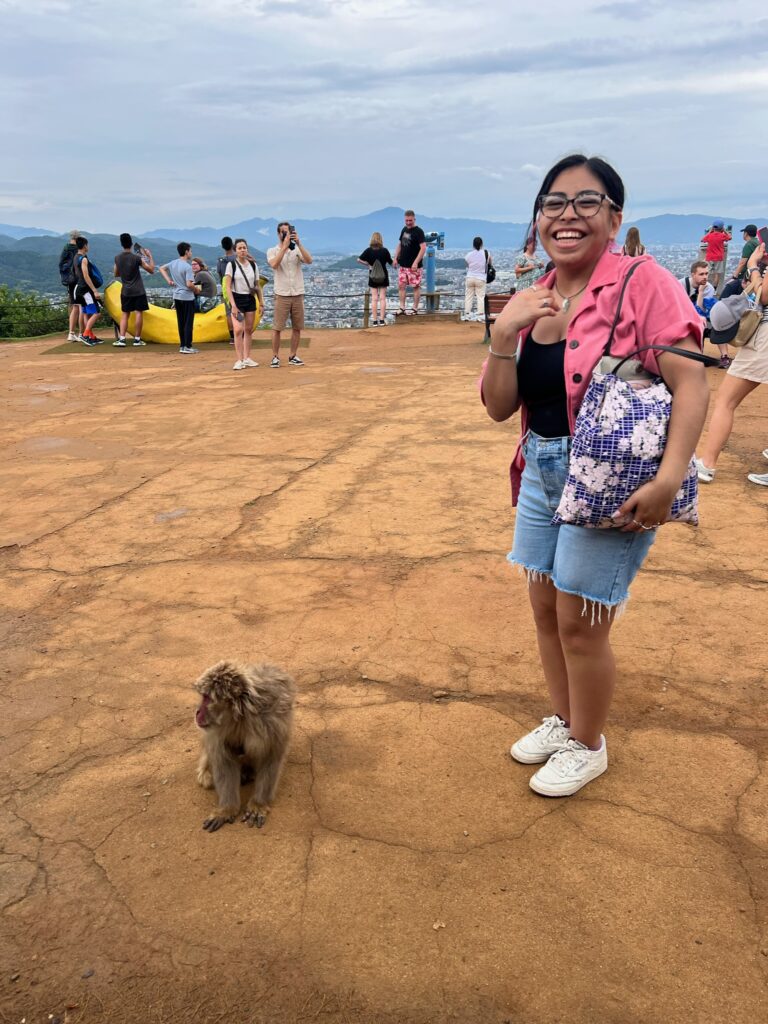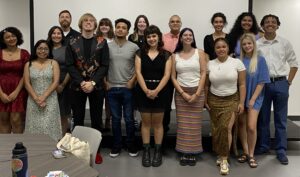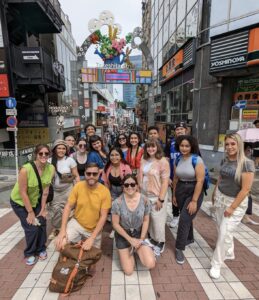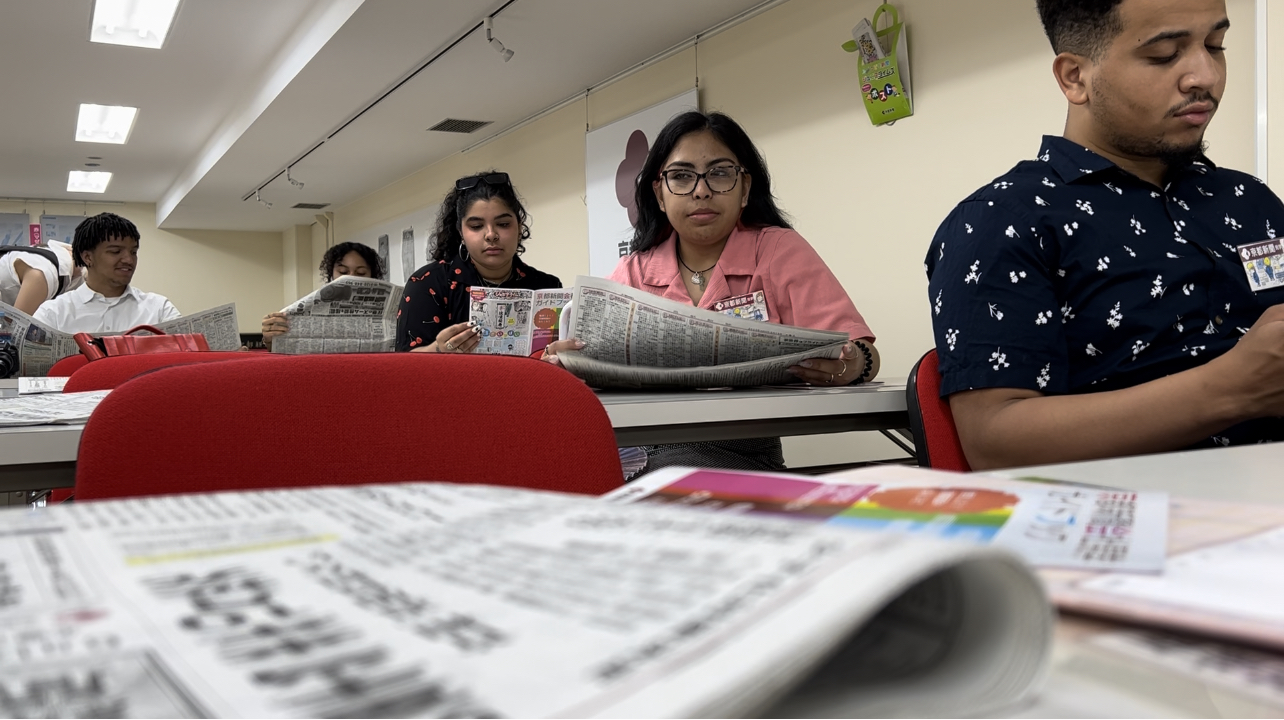
Day seven of the SJMC Japan trip found the team on the front page of a Japanese newspaper. And no, it wasn’t the police blotter!
The team visited The Kyoto Shimbun (which literally translates to “the Kyoto newspaper”), before heading out to explore all Kyoto had to offer, including restaurants, a park full of monkeys and the famous Gion nightlife.
A tour of The Kyoto Shimbun
After a long night of writing feature stories and creating Instagram Reels, we began our Wednesday with a visit to The Kyoto Shimbun, the largest daily newspaper in the Kyoto area. Founded in 1879, during the Meiji Era, the news outlet serves the Kyoto and Shiga prefectures. The Kyoto Shimbun provides 24/7 news coverage including local news, sports and arts and culture. The newspaper distributes an average of 400,000 copies a day and covers up to 200 pieces of news in each morning edition.
After a quick group photo, we walked through the office, and our Kyoto Shimbun tour guide, Midori Dei, answered all our questions about each step of the process. Students asked about the relationship between photographers and editors, whether or not the subjects of stories get final approval on copy and if the Kyoto paper ever sends reporters to the U.S.
The presentation and tour were given in Japanese and our guide, John Wells, translated for us. However, even with the language barrier, we learned a lot. Students learned more about the workflow of newsrooms: how stories get assigned, how reporters go out and get the stories, how photos are selected, how copy is edited and approved, how layouts are designed and approved, and even how the printing press works.
During our tour of the newspaper’s office, we got an inside look into the paper’s daily operations from the newsroom to the photography department.
“I had a lot of fun learning how newspapers were made,” Brianna Archer said. “It was a really cool experience.”
Others marveled at how quickly newspapers must work to get out the daily news. We learned that the workday for the morning edition typically starts around 4 p.m., while the workday for the evening edition starts at 10 a.m.
“I was fascinated by all the jobs that are required to put out a new newspaper every morning and evening,” Zoë Simonovic said.
At the end of the company visit, we headed back to our starting point where we were gifted a huge surprise – our group photo had been turned into the front page of a special-edition newspaper, made just for us. Excited and appreciative of our gift, students folded the papers gently, careful not to crease them.
“I’m definitely framing this when I get home,” Alaila Coleman said.
Never look a monkey in the eyes
After depositing our precious gift from the Kyoto Shimbun at the hotel, the students broke off into small groups to eat, run errands and check out more of Kyoto.
A handful of students decided to make the trek to nearby Arashiyama Monkey Park. After taking a train, riding the subway and hopping on a streetcar, we finally made it to Arashiyama. It was a grueling hike up, but we were rewarded at the top with monkeys everywhere.
While you might expect an enclosure, the monkeys roam freely, darting across the park, grooming each other, and, well, monkeying around. The only time you have to be in an enclosure is when you feed them, which you can do for 50 JPY (yen).
Still, there are a few rules to ensure the safety of visitors and the monkeys: Never stare at the monkeys, as they see it as an act of aggression, don’t touch the monkeys and don’t feed the monkeys outside of the enclosure.
It was a rewarding experience, well worth the trip out there.
“A monkey brushed up against my leg – I think I’ll be riding that high for the rest of my life,” Jamie Gonzalez said.
Washing clothes, cleaning up
Other students chose a more laid-back afternoon. One group strolled to a nearby laundromat after the coin laundry at our hotel stopped working.
“I used my free time today to do my long-awaited laundry,” Zoë said.
There was trepidation going in because most of the instructions were in Japanese, and students worried they’d turn all of their clothes pink. However, they found the laundromat easier to navigate than they initially expected. As a bonus, they were able to use the time to work on assignments.
However, an unexpected shower left Brianna and Zoë drenched on the walk back to the hotel.
“I hope my clothes are still relatively clean after that,” Zoë said.
Overall, the main way students spent their open afternoon was finishing up assignments during the day, and then, when evening came, stepped out with drip (our finest threads), from themed makeup to a socks-and-sandals combo.
The team is preparing for a jam-packed day tomorrow, that includes both a castle and a traditional tea ceremony.
